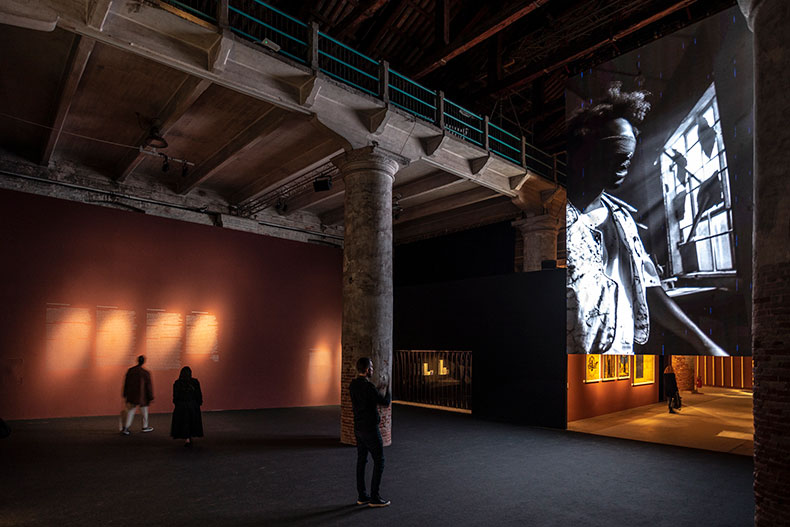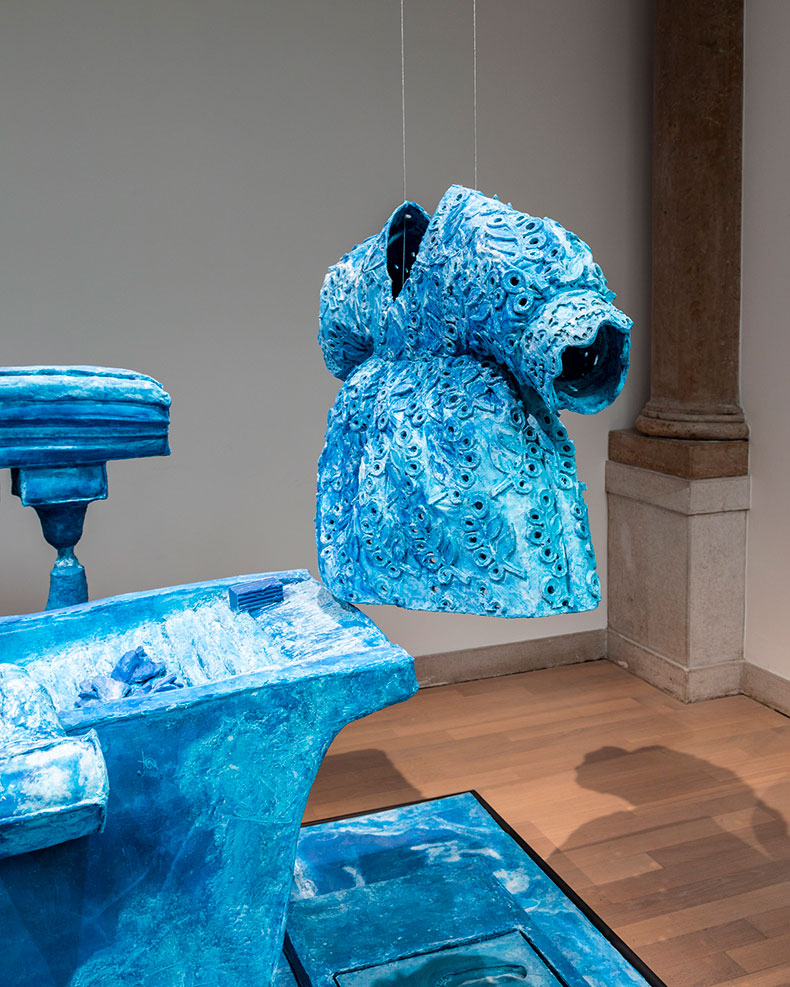The main exhibition of the Venice Architecture Biennale opens with an arresting video installation by the British poet Rhael ‘LionHeart’ Cape, in which footage of the writer is intercut with clips from the Notting Hill carnival and a Venetian reveller in a sinister costume. In his spoken word soundtrack, a blindfolded LionHeart calls architecture to account for its failings, and proposes that ‘those with walls for windows’ try looking out of them for a change.
This challenge sets the scene for the exhibition that follows, which has been curated this year by Scottish-Ghanaian architect Lesley Lokko. The first Black woman to oversee the biennale, Lokko has invited a younger set of exhibitors than previously, with more than 50 per cent of the participants coming from Africa and its diasporas. This has resulted in an unmistakeable change of tone, both in terms of the content of the show and also the demographic of its audience. On this basis alone it should be counted a success, as past iterations have featured much hand-wringing about, and condescension to, architects from developing countries, but little in the way of real representation.

Those With Walls for Windows by Rhael ‘LionHeart’ Cape at the entrance of the Arsenale exhibition. Photo: Marco Zorzanello; courtesy La Biennale di Venezia
In terms of the exhibition itself, there is less on display this time, which gives the individual installations – and the visitor – more space to breathe. The better contributions to the biennale are usually large-scale demonstrations of the material possibilities of architecture, and this year was no different. A folded screen of crushed bricks and concrete by Gloria Cabral and Sammy Baloji that partitions off the beginning of the corderie (the long ropemaking building at the heart of the Arsenale), is a compelling juxtaposition of ‘poor’ materials (taken from building sites in Brussels) and sophisticated form (based on Congolese weavings). It condenses complex ideas about the relations between a former colony and its coloniser into a singular coherent object. Thanks to the chunks of broken Venetian glass embedded in the screen, spots of light shine through this barrier: might these be chinks of optimism penetrating the mountains of waste produced by construction?
The British Pavilion is also a success, thanks in no small part to the clarity of its curation by Jayden Ali, Joseph Zeal Henry, Meneesha Kaur Kellay, and Sumitra Upham. Each of the neoclassical building’s rooms is dedicated to one large sculptural installation; particularly strong are a film by the curators, which tells stories of diasporic cultures in Britain, and a soap-impregnated textile sculpture by Sandra Poulson, representing a backyard laundry in Luanda. Some have complained that here, and elsewhere in the biennale, there is not much actual architecture on display, but it seems to me that artists and designers have occupied these spaces in a much more convincing way than usual; too often architects opt to present research projects in the form of impenetrable infographics and reams of data.

Detail of Sabão Azul e Água by Sandra Poulson in the British Pavilion. Photo: Marco Zorzanello; courtesy La Biennale di Venezia
The other pavilions are a mixed bunch, as usual. The central pavilion includes several highlights, such as a video by Kgaugelo Lekalakala about how women experience male-dominated spaces, with Dada-esque digital collages incorporating African sculpture. To me these seem like a forceful critique of Hannah Höch’s photomontage series From an Ethnographic Museum (1924–30), which falls into the trap of reproducing some of the attitudes it attacks. The Golden Lion went this year to the Brazilian Pavilion, where we learn the history of the country’s first Black women architects, who built a centre for the Candomblé religion in the 1830s. It also argues that the modernist capital Brasilía was a neo-colonial enterprise, but the curation fails to make these elements cohere.
Despite some inevitable patchiness, the merits of this year’s approach are made even clearer by an off-site exhibition of the Neom project in Saudi Arabia – nothing to do with the official Biennale, although Saudi Arabia has a national pavilion. This futuristic mega-city, which is to stretch across the desert in a 500m-high, 170km-long line, is estimated to cost more than $500 billion. Its scale and location mean that it is unlikely ever to be realised; nevertheless, it has secured the involvement of some of the world’s most prominent architects, including Massimiliano Fuksas, Thom Mayne, Peter Cook, Wolf D. Prix and David Adjaye. Each of these contributed large models showing their visions of sections of The Line, as the linear city is to be called. If the display in Venice is anything to go by, the future will comprise lightless canyons filled with indecipherable blobs. In the real world, three protesters against the development in the desert region have been sentenced to death and three more have been sentenced to terms of imprisonment ranging from 27 to 50 years. Yet, while the grandees are making an embarrassing spectacle of themselves, across the Grand Canal a more positive vision of architecture can be found. So good riddance to that rubbish and thank goodness for Lokko’s biennale.
Tom Wilkinson is co-director of New Architecture Writers, which will be in residence at the Venice Architecture Biennale in July.














![Masterpiece [Re]discovery 2022. Photo: Ben Fisher Photography, courtesy of Masterpiece London](http://zephr.apollo-magazine.com/wp-content/uploads/2022/07/MPL2022_4263.jpg)
‘Like landscape, his objects seem to breathe’: Gordon Baldwin (1932–2025)